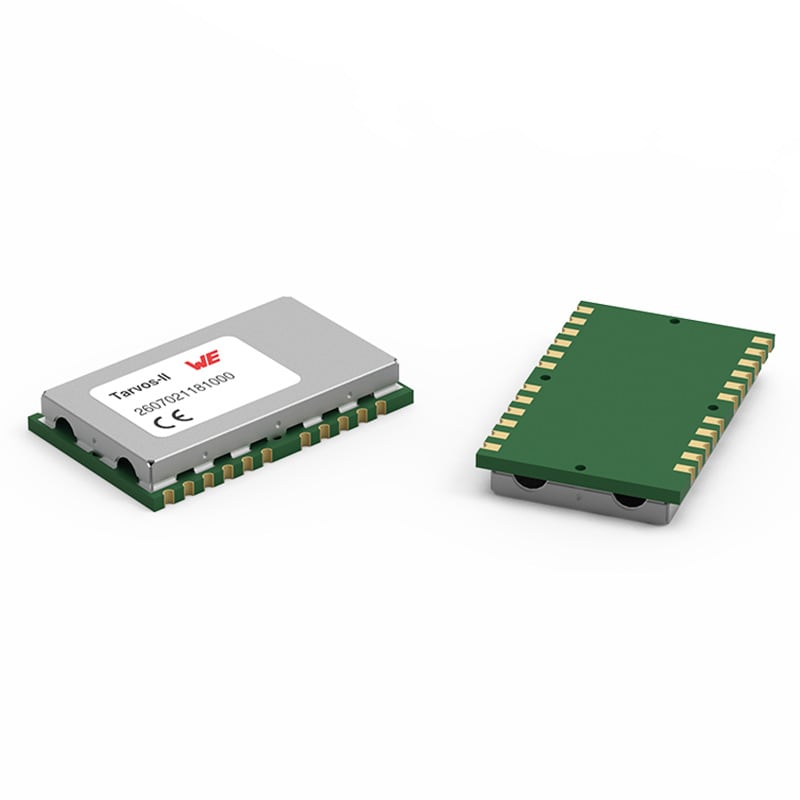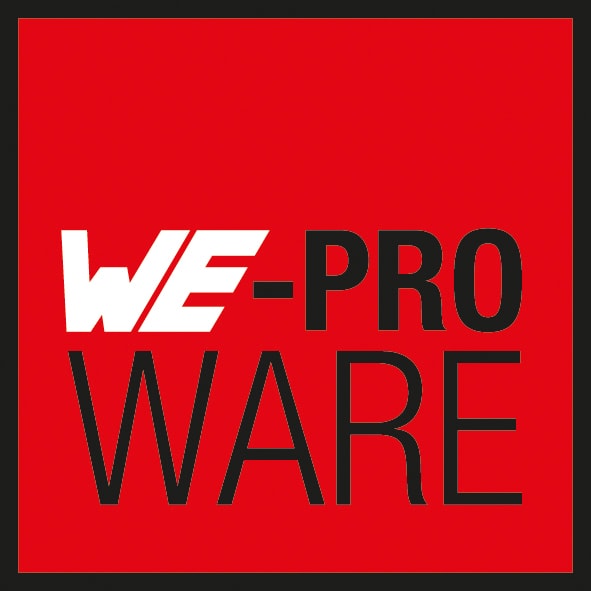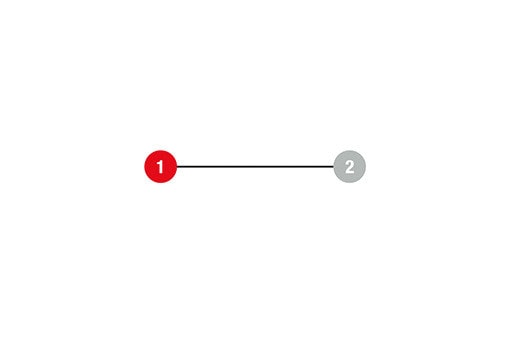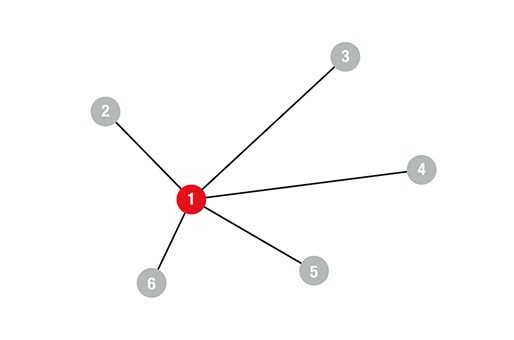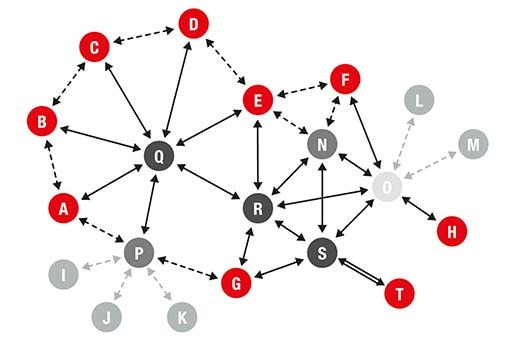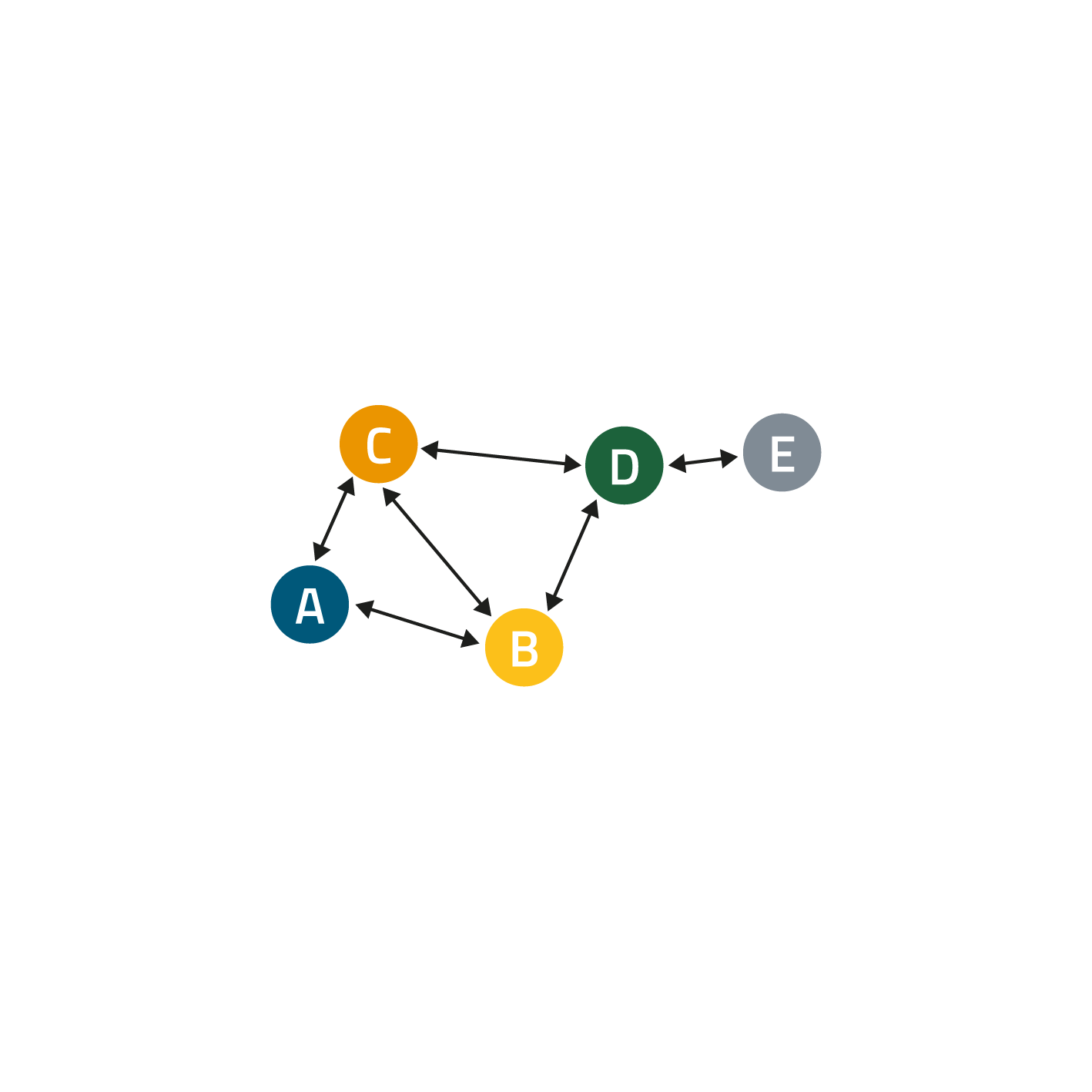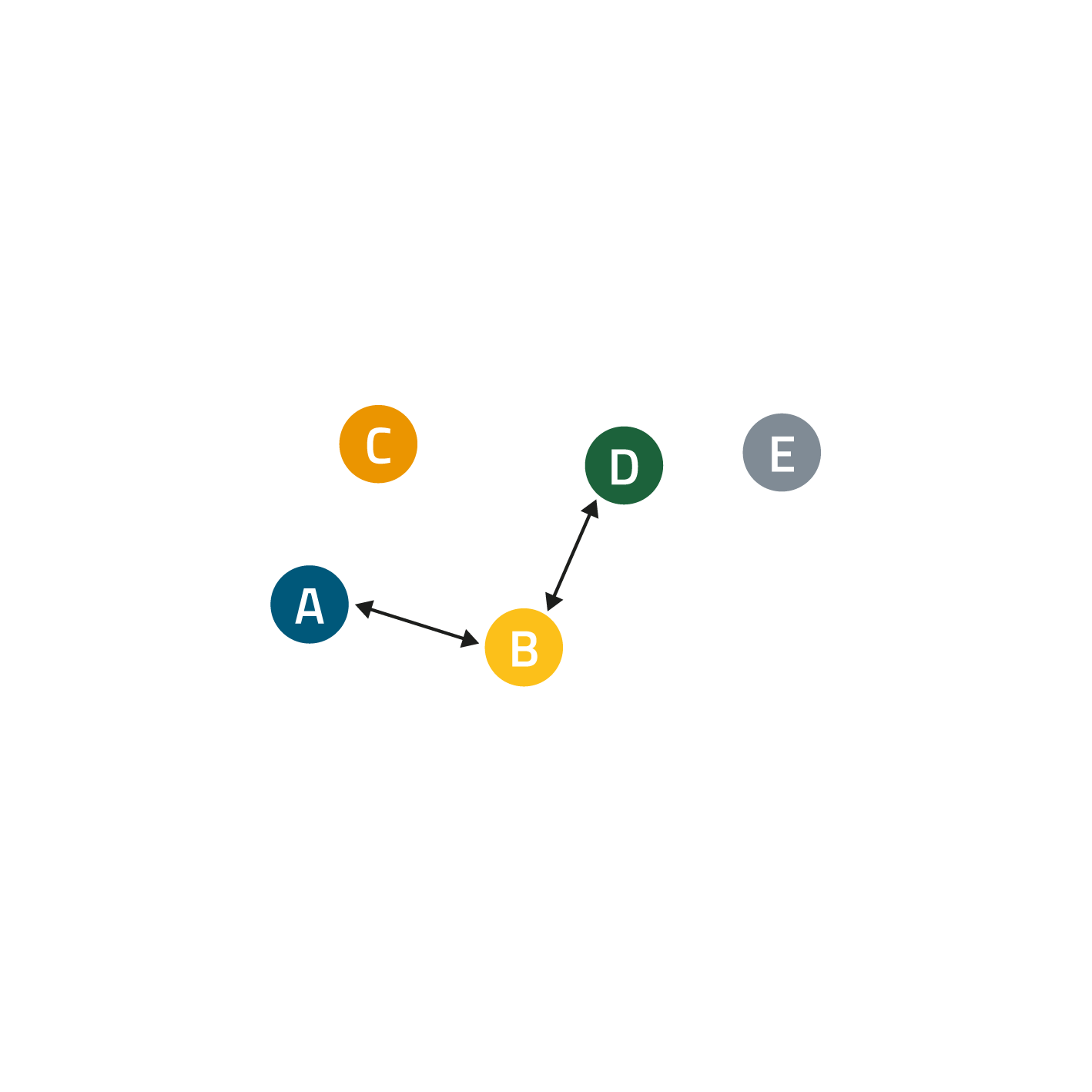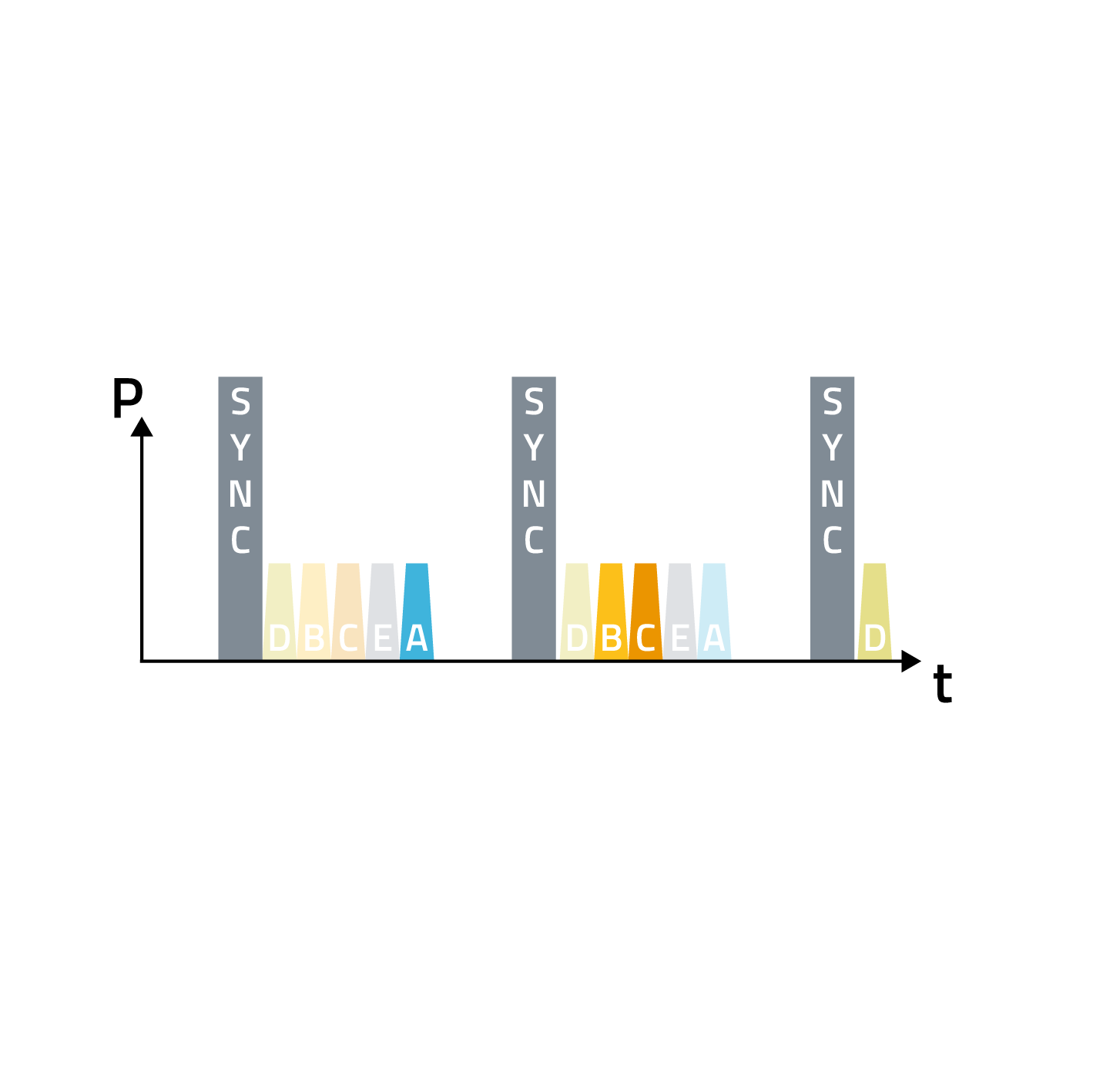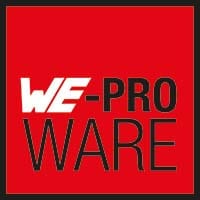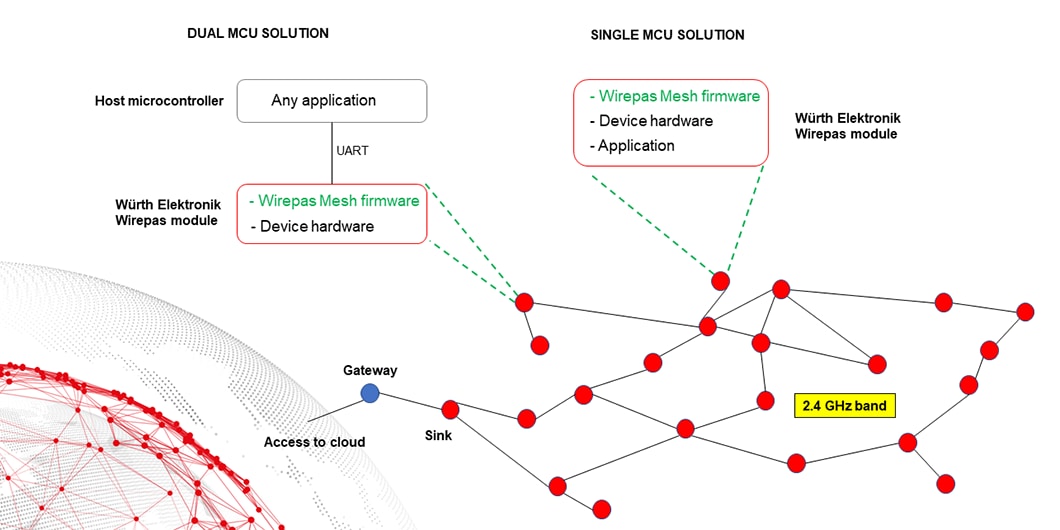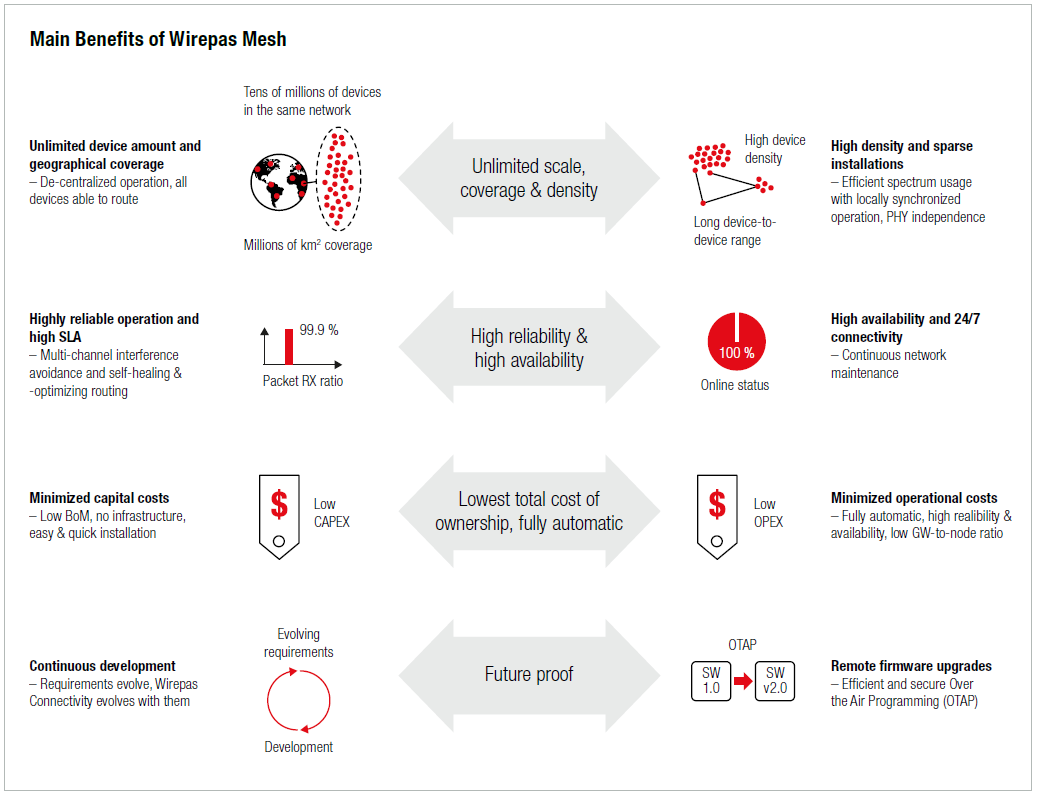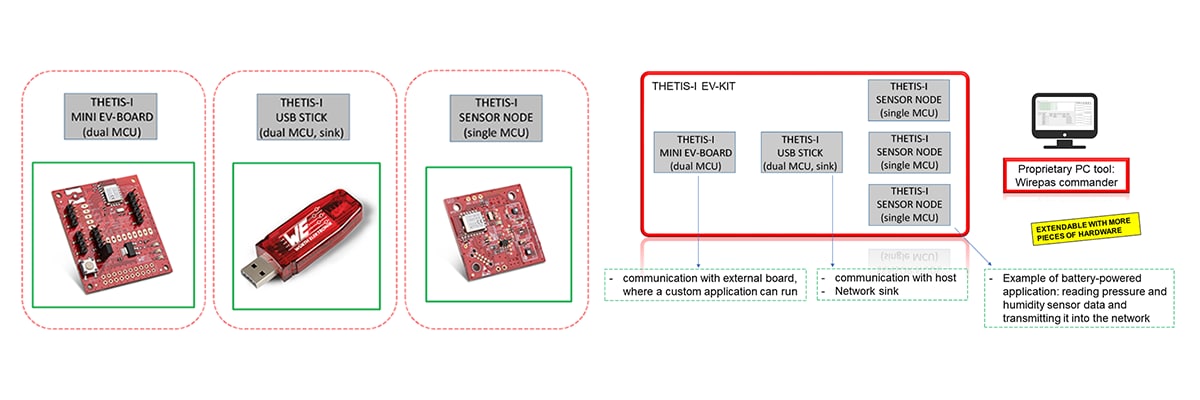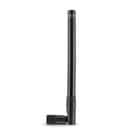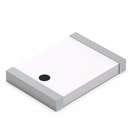Characteristics
Discover our recommended product Tarvos-III
- High Performance OEM radio module
- 868 MHz SRD frequency band
- Range up to 2000 m line of sight
- RF output power up to 14 dBm
- Small size: 17 x 27 x 4.0 mm
- Low-power functions
- Flexible addressing (max. 255 nodes per network)
- MESH / MULTI-HOP networking
- With integrated or external antenna
- Integrated software stack with extensive functions
- Configuration via UART interface
- Available on Tape & Reel for SMT mounting
- ACC Software - PC Tool to configure and evaluate the module
- Wireless Connectivity SDK
Products
| Order Code | Datasheet | Replacement Order Code | Simulation | Manual | Downloads | Status | Description | Frequency Range (MHz) | dLoS (m) | PTx, 50 Ω (dBm) | Rxsens, 50 Ω (dBm) | VDD min. (V) | VDD max. (V) | Rb max. (kbps) | ANTConn | L (mm) | W (mm) | H (mm) | Radio Module | USB Radio Stick | Antenna | Evaluation Kit | Offer |
|---|---|---|---|---|---|---|---|---|---|---|---|---|---|---|---|---|---|---|---|---|---|---|---|
| 2607029281001 | – | – | – | – | Active i| Production is active. Expected lifetime: >10 years. | EV-Kit Tarvos-II incl. ext. antenna | – | – | – | – | – | – | – | – | – | – | – | 2607021181000 | 2607056281001 | Hyperion-I | – | ||
| 2607021181000i | SPEC | 2609011081000 | – | – | NRND i| Production is active. Product is not recommended for new design. Expected lifetime: 2-5 years. | Tarvos-II | 868 - 870 | 2000 | 14 | -117 | 2 | 3.6 | 100 | – | 17 | 27 | 3.8 | – | 2607056281001 | Hyperion-I Hyperion-II | 2607029281001 | – | |
| 2607056281001 | SPEC | – | 4 files | Active i| Production is active. Expected lifetime: >10 years. | Tarvos-II USB radio stick | 868 - 970 | 2000 | 14 | -117 | – | – | 100 | SMA connector | 74 | 23.65 | 12 | 2607021181000 | – | Hyperion-I Hyperion-II | 2607029281001 |
| Order Code | Datasheet | Replacement Order Code | Simulation |
|---|---|---|---|
| 2607029281001 | – | – | – |
| 2607021181000i | SPEC | 2609011081000 | – |
| 2607056281001 | SPEC | – |
| Offer |
|---|
| – |
| Order Code | Datasheet | Replacement Order Code | Simulation | Manual | Downloads | Status | Description | Frequency Range (MHz) | dLoS (m) | PTx, 50 Ω (dBm) | Rxsens, 50 Ω (dBm) | VDD min. (V) | VDD max. (V) | Rb max. (kbps) | ANTConn | L (mm) | W (mm) | H (mm) | Radio Module | USB Radio Stick | Antenna | Evaluation Kit | Offer |
|---|
Download now free of charge
Software downloads
IoT becomes intelligent when hardware and software work together harmoniously!
The aim of the Wireless Connectivity Software Development Kit (SDK) is to minimize the effort required on customer side to enable his host MCU to communicate with Würth Elektronik eiSos radio modules. It contains the implementation of all available commands in pure C-code. In order to integrate any Würth Elektronik eiSos wireless module, the user has to simply port the corresponding C-code to his host processor. This significantly reduces the time needed for developing the software interface to the radio module.
Kickstart your Prototyping instantly.The WE UART Terminal is an easy-to-use PC software that enables complete control of the Würth Elektronik eiSos wireless modules through an intuitive GUI. This tool along with the evaluation boards allow quick prototyping and testing of various features of the radio modules.
- Simple setup
- Intuitive interface
- Color coded Packet interpretation
- 100% log traceability
The "ACC V3" is a tool to update and configure certain Würth Elektronik eiSos modules. The supported features will include the search and upload of new firmwares as well as the modification of the available configuration parameters. It allows full user control over all supported products, as in the range of the producer’s intentions, always referring to the respective manual of the connected module.
Due to current export legal restrictions, we are required to control the provision of software. To download the software, please contact our technical support or your local sales representative directly. Thank you for your understanding.
Mesh Networks
Mesh Networks
A mesh is a network of nodes, where messages are propagated through the net to the dedicated receiver.
A mesh refers to a multiple connection between devices or nodes: the nodes/devices connect directly, dynamically and non-hierarchically to as many other nodes as possible and cooperate with one another to efficiently route data.
They differ from conventional network topologies, which are based on the hierarchical connection between a small subset of nodes.

Network Topologies
- Speed
- Current consumption
- Throughput
- Maximum number of nodes
- Installation effort
- Robustness
Mesh Technologies
![Flooding Mesh Flooding Mesh]()
Each node just forwards the message. We differentiate between synchronous and asynchronous flooding mesh.
Advantages:
- Easy to use
- No network organization (installation, change)
- Size does not matter
Disadvantages:
- Increased traffic
- Duty cycle problems
![Routing Mesh Routing Mesh]()
The network master or each node knows the path.
Advantages:
- Shortest/Cheapest path
Disadvantages:
- Extra network organization traffic
- Size limitations (master handled)
- Less robust on network changes
- Master has to know when adding/removing a node
![Asynchronus Mesh Asynchronus Mesh]()
Messages can be transmitted at any time
Advantages:
- Fast
- No installation effort
- No size limitations
Disadvantages:
- Energy consuming (~100% RX)
- High probability for radio packet collision
The WE-ProWare Asynchronous Flooding Mesh is integrated into following products
- [Thyone-I]()
- [Tarvos-III]()
- [Thebe-II]()
- [Thelesto-III]()
- [Themisto-I]()
![Synchronus Mesh Synchronus Mesh]()
All nodes are synchronized and transmit/receive at determined time slots.
Advantages:
- Energy efficient (sleeping mostly)
- Time and frequency hopping possible
Disadvantages:
- Synchronization effort (master needed)
- Size limitation
- Low throughput/High latency
![WE-ProWare WE-ProWare]()
Asynchronous flooding mesh capability is integrated into our proprietary firmware for the modules [Thyone-I](), [Tarvos-III](), [Thebe-II](), [Thelesto-III]() & [Themisto-I]().
![Wirepas Wirepas]()
Asynchronous and synchronous routing mesh capability is integrated into our Wirepas module [Thetis-I]().
Wirepas Mesh
Wirepas is an international company with headquarters in Tampere, Finland.
Wirepas is specialized in IoT topics and offers the Wirepas Mesh stack (firmware only) and support to high volume customers. Würth Elektronik is in cooperation with Wirepas to integrate the Wirepas mesh stack into radio chips as well as offering service to our customers to develop Wirepas mesh radio modules based on the existing Nordic Semiconductor nRF platform.
Würth Elektronik is licensed to develop, support and sell standard and custom Wirepas mesh radio modules.
Wirepas Mesh is a connectivity protocol for radio modules, optimized for large scale and energy efficient wireless mesh networks in the frequency 2.4 GHz. This innovative technology can be used to create large IoT networks, for example using battery-powered sensors, in which each node also functions as a router.
On a single MCU solution, the application runs on the device itself. On a dual MCU solution, the application runs on a host microcontroller.
Traditional mesh networks suffer in large scale from complex networking tables, congestion and bandwidth issues. Wirepas overcomes these issues by removing network‘s infrastructures and decentralizing network‘s intelligence on the nodes. All networking decisions are done locally by the nodes. Every node:
- scans automatically the neighborhood and choose the best path to the sink
- adapts transmit power to neighbor proximity
- can act as sink, routing or non-routing node
- can work in low power or low latency mode
- chooses the best frequency to use locally
- has a high configurability, interference-tolerance, ultra-low energy consumption: Wirepas mesh software is ideal for large scale and battery-operated networks.
![The Thetis-I Evaluation-Kit The Thetis-I Evaluation-Kit]()
For Thetis-I we offer a specific Evaluation kit, which consists of: 1 Mini Evaluation Board, 1 USB Stick and 3 battery driven sensor nodes. Their specific functions are in the picture below.
In case you need a larger test network, you can simply extend your starter kit by purchasing additional pieces of any of the three hardware components ( [mini evaluation board](), [USB stick](), [sensor node]() ).
Together with our proprietary software tool Wirepas Commander, you can setup and test your Wirepas network in few easy step.
Antenna
Videos
#askLorandt explains: The difference between the transparent mode and the command mode
Videos
How to choose the fitting radio protocol
Videos
Manni Talks- Unboxing the Evaluation Kit
Videos
Manni Talks - Serial Interfaces
